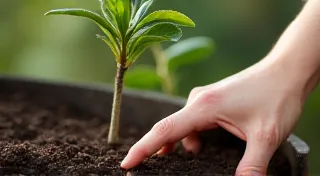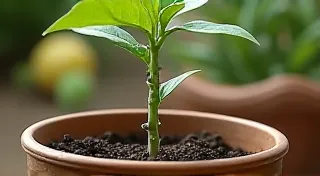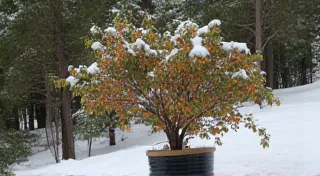Essential Container Gardening Tips for Dwarf Fruit Trees: Soil, Watering, and Fertilizing
Success in container fruit growing hinges on creating the ideal conditions for your dwarf fruit trees. Unlike traditional in-ground planting, container gardening demands more focused attention to soil, watering, and feeding. This article details the best soil mixes, watering techniques (preventing overwatering and underwatering), and fertilization schedules specifically tailored for dwarf fruit trees in pots. Let's dive in!
Choosing the Right Soil Mix
Don't use garden soil! It's too dense and compacts easily in containers, hindering drainage and root health. A well-draining, nutrient-rich potting mix is essential. Many gardeners find that creating their own mix is the best way to ensure the perfect blend for their fruit trees. If you're looking for a detailed breakdown of the best soil mixes specifically for dwarf fruit trees, you can find it over on Soil Secrets: The Best Soil Mix for Container-Grown Dwarf Fruit Trees. Here’s a good base recipe:
- 1 part peat moss or coco coir: Provides moisture retention and aeration.
- 1 part perlite or vermiculite: Improves drainage and prevents compaction.
- 1 part composted bark or aged compost: Adds nutrients and beneficial microbes.
You can find pre-made potting mixes specifically formulated for container gardening, but always check the label to ensure they're suitable for fruit trees. Look for mixes containing slow-release fertilizer as a bonus. Understanding the nuances of creating or choosing the right soil is truly foundational to long-term success.
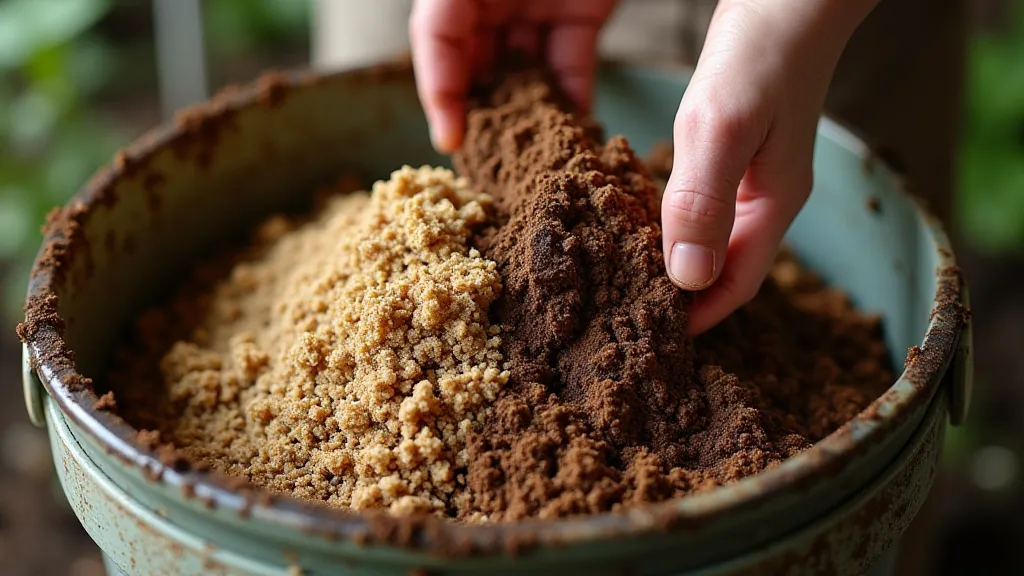
Watering: Finding the Balance
Watering is arguably the trickiest part of container gardening. Overwatering is a common killer, but underwatering is just as detrimental. Here’s how to find the sweet spot:
- Check the soil moisture: Stick your finger about an inch into the soil. If it feels dry, it's time to water.
- Water thoroughly: When you water, water deeply until water drains from the drainage holes. This ensures the entire root ball is moistened.
- Consider the weather: Hot, sunny days will require more frequent watering than cool, cloudy days.
- Adjust for the season: Dwarf fruit trees need less water during the dormant season (winter).
- Use a moisture meter: For beginners, a moisture meter can be a very helpful tool to avoid guesswork.
Common Watering Mistakes to Avoid:
- Watering on a schedule: Plants don’t follow schedules. Water based on their needs, not a calendar.
- Shallow, frequent watering: This encourages shallow root growth.
- Letting the pot sit in a saucer of water: This can lead to root rot.
Maintaining this delicate balance isn't just about frequency, but also about a deep understanding of the plant's seasonal rhythms. Some gardeners approach this with a sort of quiet reverence, mindful of the subtle shifts in light and temperature. It’s akin to what some describe as The Gnomon's Whisper: Seasonal Rhythms and the Art of Fruitful Constraint—a mindful attentiveness to the timing of nature.
Fertilizing for Abundant Fruit
Dwarf fruit trees in containers rely on you to provide all their nutrients. Regular fertilization is crucial for healthy growth and fruit production. Think of it as a nutritional support system, ensuring your trees have everything they need to thrive in their limited environment. Without a consistent supply of essential elements, even the most carefully selected soil mix will eventually become depleted.
- Use a balanced fertilizer: Look for a fertilizer with a ratio like 10-10-10 or 14-14-14 (N-P-K).
- Start slow: Begin fertilizing in early spring when new growth appears.
- Follow the instructions: Fertilizer labels provide specific dosage recommendations. Don't over-fertilize!
- Consider organic options: Compost tea, fish emulsion, and seaweed extract are excellent organic fertilizers.
- Micronutrients are important: Look for fertilizers containing trace elements like iron, zinc, and manganese. Yellowing leaves can be a sign of micronutrient deficiency.
Fertilizing Schedule (General Guide):
- Spring: Apply fertilizer every 2-4 weeks during the active growing season.
- Summer: Reduce frequency to once a month.
- Fall: Stop fertilizing 6-8 weeks before the first expected frost.
If you’re seeking a more detailed, step-by-step guide to fertilizing your dwarf fruit trees in containers, you’re encouraged to explore Fertilizing Dwarf Fruit Trees in Containers: A Step-by-Step Guide. Mastering this skill is vital for a bountiful harvest.

Drainage is Key
Proper drainage is non-negotiable. Ensure your container has ample drainage holes. You can even add a layer of gravel or small stones at the bottom of the pot (although this isn't strictly necessary and takes up valuable soil volume). The most important thing is to avoid letting the pot sit in standing water. The philosophy behind successful container gardening often echoes a broader appreciation for cultivating patience and embracing limitations, akin to The Orchard's Echo: Cultivating Patience in Miniature Landscapes—finding beauty and abundance within a confined space.
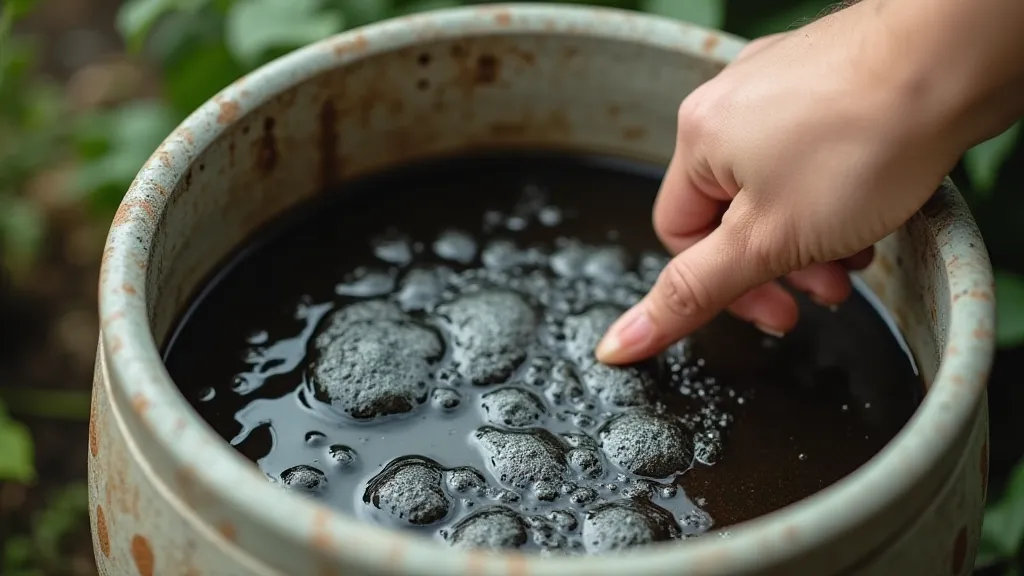
Troubleshooting and Maintenance
Keep an eye out for signs of stress, such as yellowing leaves, stunted growth, or fruit drop. These can be caused by a variety of factors, including improper watering, nutrient deficiencies, or pest infestations. Regularly inspect your trees and address any problems promptly. Repotting into a slightly larger container every 1-2 years is also recommended to provide fresh soil and space for root growth. Remember, container gardening requires ongoing attention and a willingness to learn from both successes and setbacks. It’s a constant journey of observation, adaptation, and refinement. A little extra care goes a long way in ensuring your dwarf fruit trees thrive and reward you with delicious, homegrown fruit.
Consider the impact of microclimates around your container as well. Positioning near a wall might offer protection from wind, while a spot receiving afternoon shade can prevent scorching. Regularly inspecting the roots when repotting is also crucial for early detection of any issues. Proper pruning, while a separate topic, is also essential for maintaining healthy growth and maximizing fruit production. Remember to research the specific needs of your chosen fruit tree variety, as different species may have varying requirements. With consistent care and attention to detail, you can enjoy a thriving miniature orchard right on your patio or balcony.
And finally, don't be afraid to experiment and find what works best for you and your trees! Gardening is a continuous learning process, and every gardener develops their own unique methods and techniques. Share your experiences with others, ask questions, and celebrate your successes – both big and small. Happy gardening!

